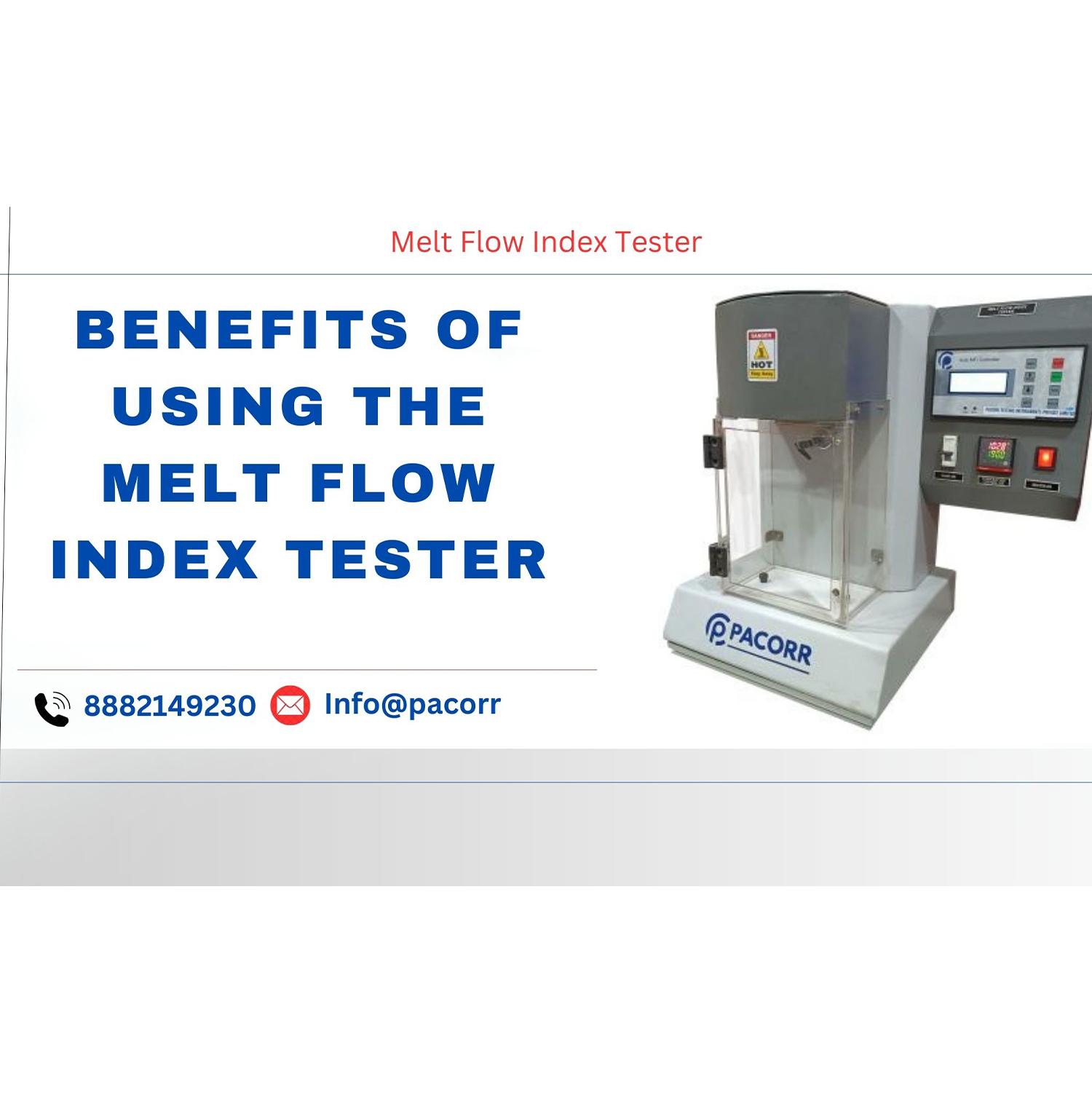Introduction:
In the polymer industry, ensuring the quality and consistency of materials is key to manufacturing high-performance products. One of the most important tests to evaluate the flow properties of polymers is the Melt Flow Index (MFI) test. The Melt Flow Index Tester is an indispensable tool that helps manufacturers accurately measure how easily polymers flow under specific conditions. This data is essential for optimizing production processes and ensuring the desired material performance.
In this article, we will explore the significance of MFI testing, how the Melt Flow Index Tester works, and why it is a must-have instrument for any polymer manufacturer.
What is the Melt Flow Index (MFI)?
The Melt Flow Index (MFI) measures how easily a polymer melts and flows when subjected to heat and pressure. It indicates the material's viscosity and molecular weight, which directly affects its processing characteristics.
-
A higher MFI value indicates a polymer that flows more easily and is often preferred in processes that require fast production, such as extrusion.
-
A lower MFI value indicates a more viscous material, often used for applications requiring greater strength, rigidity, and durability.
MFI testing helps determine how a polymer will behave during processing and ensures that it meets the performance specifications required for different applications.
How Does a Melt Flow Index Tester Work?
The Melt Flow Index Tester operates by evaluating the flowability of a polymer sample under controlled conditions of heat and pressure. The process typically involves the following steps:
-
Loading the Sample: A sample of the polymer is placed into a heated barrel, where the temperature is carefully controlled to match the material's optimal processing temperature.
-
Applying Pressure: A predetermined weight is applied to the polymer sample, forcing it through a die under controlled pressure.
-
Measurement: The amount of polymer that flows through the die is measured over a set period, usually 10 minutes. The result is recorded as the grams of polymer that flow per 10 minutes (g/10 min).
-
Result Interpretation: The MFI value is used to assess the polymer’s flowability. A higher MFI suggests that the polymer is easier to process, while a lower MFI suggests a material with greater resistance to flow.
Why is MFI Testing Crucial for Manufacturers?
-
Quality Control: Regular MFI testing ensures that polymer materials maintain consistent quality across batches. Any significant deviation in MFI values can indicate issues such as polymer degradation, which could affect the final product's performance.
-
Optimizing Production Efficiency: MFI testing helps manufacturers understand how different materials will behave in various production processes. This knowledge enables them to adjust processing conditions, such as temperature and pressure, for more efficient manufacturing.
-
Material Selection: MFI testing assists manufacturers in choosing the right material for specific applications. For example, polymers with high MFI are ideal for fast molding processes, while polymers with low MFI are better suited for applications requiring high strength and durability.
Advantages of Using a Melt Flow Index Tester
-
Accurate and Reliable Results: Melt Flow Index Testers provide precise, repeatable measurements, ensuring consistent results for quality assurance and process monitoring.
-
Easy Operation: These testers are designed for ease of use, allowing operators to quickly and efficiently conduct tests with minimal setup.
-
Enhanced Process Control: With accurate MFI measurements, manufacturers can fine-tune their production processes, preventing defects and reducing waste.
-
Cost Efficiency: Early identification of potential issues with materials leads to better resource management and cost savings, preventing defects and improving product yield.
Key Features to Consider When Choosing a Melt Flow Index Tester
When selecting a Melt Flow Index Tester, consider the following key features:
-
Temperature Control: The ability to accurately control the temperature is crucial for achieving reliable MFI results. Look for testers with adjustable temperature settings that can accommodate various polymer types.
-
Precision and Accuracy: Ensure that the tester provides consistent and precise measurements to guarantee that polymer flow rates are evaluated accurately.
-
User-Friendly Interface: A clear and intuitive display makes it easier to operate the tester and record data. Look for a model with a simple interface that reduces the risk of user errors.
-
Safety Features: The Melt Flow Index Tester should be equipped with safety features such as temperature protection, automatic shutoff, and easy access to the test chamber for safe operation.
Conclusion
The Melt Flow Index Tester Price is a critical tool for assessing the flowability of polymers, helping manufacturers ensure that their materials meet performance and quality standards. By providing insights into a polymer's processing behavior, MFI testing allows for more efficient manufacturing processes and better product design.
At Pacorr, we offer high-quality Melt Flow Index Testers designed to provide precise, accurate, and consistent results. Our testers are easy to use and ideal for quality control, process optimization, and material selection in polymer production.
To learn more about our Melt Flow Index Testers and how they can benefit your production process, visit pacorr.com.
 Free IL
Free IL


